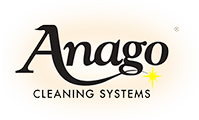
Post-construction clean-up presents a number of challenges. Ideally, your construction company will clean up on your behalf after completing renovations on your building but when it doesn’t, you’ll need to find other methods of cleaning up the site.
Whether you operate a construction company or your building is about to undergo a renovation, the team at Anago can help—we tackle post-construction renovations. Want to try to take on the project yourself? Here’s a brief guide to help you clean up safely and efficiently after a renovation:
Post-Construction Cleaning Equipment Checklist
Cleaning supplies
- Mop and bucket
- Microfibre cloths
- Sponges
- Rags
- Soft-bristled broom/brush
- Plastic sheets/tarps
- Masking/painter’s tape
- Garbage bags
- A putty knife
- All-purpose cleaner
- Dish soap
- Glass cleaner
- Squeegee
- Garbage bags
Heavy-duty equipment
- Ladder
- Step ladder
- Shop-Vac
- Wet-dry vacuum
- Power washer
- Carpet cleaner
- Floor polisher
Protective equipment
- Work gloves
- Safety glasses
- Dust masks/respirators
- Work boots
A Step-By-Step Guide to Post-Construction Cleaning
Step 1: Inspection
Start by moving from room to room and assessing what needs to be cleaned. During this step, you should:
- Ensure that all construction equipment and tools have been removed.
- Make note of any large debris.
- Note any hazardous materials.
- Make note of paints on windows, marks on cabinetry, and other spots that will need attention.
- Create a plan for which areas you’ll clean first.
Step 2: Rough cleaning
The next step involves removing any debris, as well as any materials that may contain contaminants like lead and asbestos. For the latter, be sure you have appropriate training, like the asbestos abatement training outlined by SAFE Work Manitoba. Hazardous materials are dangerous, and should not be handled without training.
From there, remove any obvious blemishes, stains, and spots. You may need to use your putty knife, rags, and a variety of cleaning products to get the job done. Once these blemishes are removed, we recommend washing the walls, door frames, and other surfaces.
Once large debris and obvious imperfections have been dealt with and surfaces have been washed, you can sweep and vacuum the floors. A Shop-Vac is the best tool here; dust particles can enter the air and stick to windows and Shop-Vacs reduce the likelihood that particles will become airborne.
Step 3: Second cleaning
With the initial cleaning completed, you’ll want to do a second pass; dust has likely settled in new places since the first cleaning. You’ll want to check inside cabinetry, under registers, and around tight corners. You may need to wash walls and other surfaces down again; use microfibre cloths to pick up dust and damp rags with cleaning products for washing.
Step 4: Post-cleaning touch-ups
Once the second pass has been completed, you can wait a few days before returning to the site. At this point, the last vestiges of dust will have appeared; wipe everything down again. Check back regularly, and use all of your senses to see if mould, mildew, or other problems have appeared. Clean when appropriate.
Tips for Managing Post-Construction Waste
There are a few tips for dealing with the waste you’ll generate during clean-up:
- Be sure to follow local regulations.
- Separate waste into streams—hazardous, general, and recyclable.
- Dispose of waste as soon as possible to avoid attracting pests.
- Consider renting a dumpster.
Our biggest tip for managing post-construction waste? Hire a professional cleaning company to take care of everything for you. Here at Anago, we offer commercial cleaning services in Winnipeg, including post-construction and post-renovation cleaning. Contact us today!
